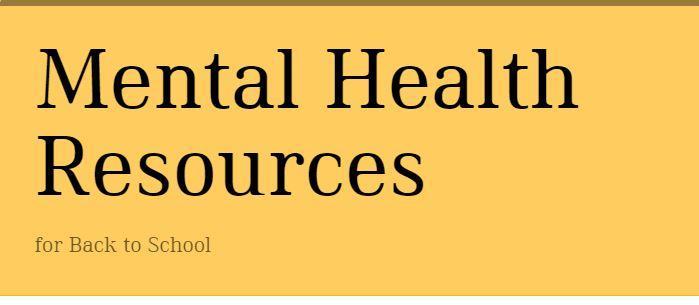Back to school season this Fall is going to look different this year than in years past. There’s a mix of excitement, fear, and anticipation for this transition back. It could feel disorienting and nerve-wracking, or perhaps an overwhelming joy! Whether it’s you, your child, or your teen going to school, it’s important to remember that not everyone will react to this change in the same way. It might have some serious impacts on your mental and behavioral health. Kids especially might have a hard time adjusting to maintaining a social distance from others, constantly wearing masks, and having fewer social events. However, we know that knowledge is power. The Mayo Clinic, The CDC, and The Trevor Project have posted several mental health resources centered around education for parents and students alike over throughout the pandemic and we summarized the most important tips below.
Be aware and supportive. Learn about your (child’s) school policies around COVID-19. Check in, especially when first adjusting back, to see how these policies and changes could impact mental or behavioral health.
Be optimistic, but anticipate behavior changes. Maintain a positive attitude and remind yourself that this change is a new adventure, but be honest with yourself about how this change can influence your mental health.
Practice relaxation and learn some new skills to manage stress.
Maintain a daily routine. This is especially important for children going back to school. Setting habits like waking up at the same time, bringing an extra water bottle to school, and washing your hands as soon as you return home help establish some normalcy and routine in a time where we’re adjusting to a new normal.
Lead by example for both your peers and the youth in your life! Wear a mask and maintain healthy habits.
Stay connected with healthy support in your life. Does your school system or university have access available to mental health resources? Check in and get some points of contact to have on hand.
Disconnect virtually. Take a break by walking, stretching, going outside, meditating…whatever helps you recharge the best.
Below are the CDC checklists for deciding if virtual or in-person classes suit your needs best and a checklist for a smooth transition back in-person. The Trevor Project recognizes that LGBTQ+ Youth have unique stress and anxiety when it comes to COVID-19, and their resource list is included below. The Center for Behavioral Health is here to help you through this transition. If you or your child could benefit from support in this time, contact us at the Center for Behavioral Health for access to affordable therapy and psychological evaluation. Our email is behavioralhealth@spalding,edu or you can call us at (502)792-7011 to get started today.
Checklist for planning to go back to in-person classes: https://www.cdc.gov/coronavirus/2019-ncov/community/pdf/Back-to-School-Planning-for-In-Person-Classes.pdf
Decision-making checklist for in-person versus virtual learning: https://www.cdc.gov/coronavirus/2019-ncov/downloads/community/schools-childcare/back-to-school-decision-checklist.pdf
Resources for LGBTQ+ Youth coping with stress and anxiety during COVID-19:

You must be logged in to post a comment.